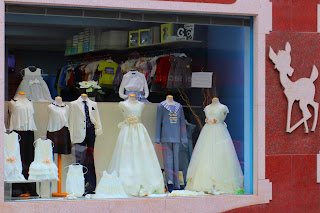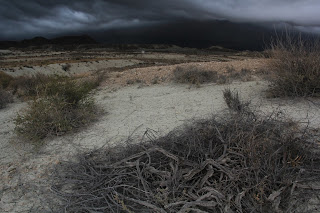I was talking to a couple of friends, one is Scottish and one sounds Scottish, so they both roll their Rs easily enough. They were telling a story though about making an appointment. There had been confusion between an appointment at 2pm (dos) and 12pm (doce). The pronunciation of dos is a bit like the English doss - a nice wide open o - like in bother or otter rather than the o in hello. There is a tendency for we Brits to pronounce it more like dose. The pronunciation of 12, doce, is something like dough-thay or maybe doth-thay. The way the words are pronounced is not really the important point here though. The important feature is that the stress in the two words is different. My guess is that when our friends were confirming the appointment the Spanish person heard the vowel sound from one word and not from the other.
Stick with me. Like those who wear old fashioned wigs I'm building a case.
People keep asking me what I do with myself now that I'm old and retired with nothing to do. The truth is, as an ex work colleague told me, what happens is that the things that were once shoehorned into the working day now expand to fill the void. My days are full, I often feel a bit pushed even, but I suppose that my concerns are all a bit smaller scale than they once were - have I done the recycling?, have I read a bit of my book?, have I cooked the meal?, stirred the compost?, dewormed the cat? and so on.
One of the things I do is to try to do a bit of Spanish everyday. This isn't just an excuse to mention Ben and Marina, the Notes in Spanish people again, it's because I bought a series of videos from them that gave me the idea for this post. This series of videos is full of tips about learning Spanish. You know the sort of thing - speak every opportunity you get, find yourself a native Spanish speaker to talk to, don't get flustered by getting things wrong, read as much as you can, take delight in the victories and forget the defeats and so on and so on. If you count the videos - each one is available as an English language version or a Spanish version with transcript - I think they said it was over 20 hours - or it may have been 10 hours - either way it's a Netflix series worth.
My own Spanish is alright but it should be better. I've put a lot of work into it over the years and my failings cause me existential angst. I'm not one of those people who has a particular knack for languages, I'm not someone able to mimic sounds and to pick up phrases and constructions from overheard speech without any problem. I don't think many people are. The Britons I know who speak good Spanish seem to do so because they live in a Spanish milieu - living with, married maybe, to a Spanish speaker or working in a Spanish speaking workplace. In effect those people who have no option but to use Spanish for hours and hours on end. British youngsters who have been brought up in Spain, the ones who have been schooled here more or less from the start, not the poor adolescents suddenly dropped into an alien culture, also speak first rate Spanish. Having encountered several over the years I often find that those youngsters have no real difficulty with everyday conversation in either Spanish or English but when it comes to reading and writing or slightly higher level language that it's their English, rather than their Spanish, which is weak.
The point is, I suppose, that the majority of we British immigrants around Pinoso don't live amongst Spaniards. We just bump into them, and Spain, every now and gain. We chat with our neighbours, we order food and drink, we have short conversations in shops or with officials but most of us have rebuilt a version of our former lives in our homes; little islands of Britishness. So, despite doing classes, despite trying to learn new vocabulary, despite buying videos full of language learning tips, despite our best efforts in general, whilst we're only popping in to Spain every now and again we'll simply have to put up with those linguistic misunderstandings.
















